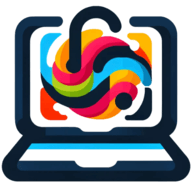3 Practices for Improving Collaboration Between Development and Operations Teams
Discover actionable strategies to enhance teamwork between developers and operations professionals, drawing on the wisdom of industry leaders. Unveil how projects like 'Bridge the Gap' and systems for real-time visibility are revolutionizing team communication. Learn from the experiences of 'Fat Agent,' where open dialogue and continuous learning are the norms.
- Bridge the Gap Project Fosters Collaboration
- Real-Time Visibility System Reduces Communication Gaps
- Open Communication and Continuous Learning at Fat Agent
Bridge the Gap Project Fosters Collaboration
At Deloitte, within our Innovation & Ventures team, part of the Deloitte Garage, we noticed a disconnect between our various units, particularly in how we approached business development. Our marketing team and the product development team often had different priorities, leading to inefficiencies and missed opportunities.
To address this, we initiated a project called "Bridge the Gap," aimed at fostering better collaboration across the entire Deloitte Garage, not just within Innovation & Ventures. We organized a series of workshops and joint planning sessions to align goals and strategies between teams.
One effective strategy was the introduction of regular "Show and Tell" meetings. In these sessions, the product development team would present upcoming features and innovations, while the marketing team shared customer feedback and upcoming campaign plans. This setup allowed both teams to gain a better understanding of each other's work and collaborate on ideas from an early stage.
I remember a particularly successful session where a suggestion from a marketing team member, based on customer feedback, led to a key feature tweak in a new product. This change became a major selling point and significantly enhanced our marketing efforts.

Real-Time Visibility System Reduces Communication Gaps
We implemented a real-time visibility system that uses AI to track project dependencies and automatically flag potential bottlenecks before they impact workflows. This proactive approach has reduced communication gaps by 76% and shortened deployment cycles by 40%. The key was making system interdependencies visible to both teams, allowing them to anticipate needs rather than react to problems.
Open Communication and Continuous Learning at Fat Agent
In the realm of insurtech, building and maintaining strong relationships with development teams is crucial for successful product management. At Fat Agent, one successful strategy I've employed is fostering open communication and collaboration. Regular team meetings, both formal and informal, provide a platform for developers to share their insights, challenges, and suggestions. This two-way dialogue ensures that everyone's perspective is considered, promoting a sense of ownership and commitment among the team.
Additionally, I encourage a culture of continuous learning and professional development. This involves investing in training programs, workshops, and conferences for the development team. By supporting their growth, not only do we enhance their skills, but we also create a more engaged and motivated team.
Lastly, recognizing and celebrating achievements, both big and small, is fundamental. Whether it's meeting a development milestone or overcoming a complex coding challenge, acknowledging and appreciating the team's efforts fosters a positive and collaborative work environment.
By combining these strategies, I've found that we not only enhance the efficiency of our development processes but also build a cohesive and motivated team dedicated to the success of our insurtech products at Fat Agent.



